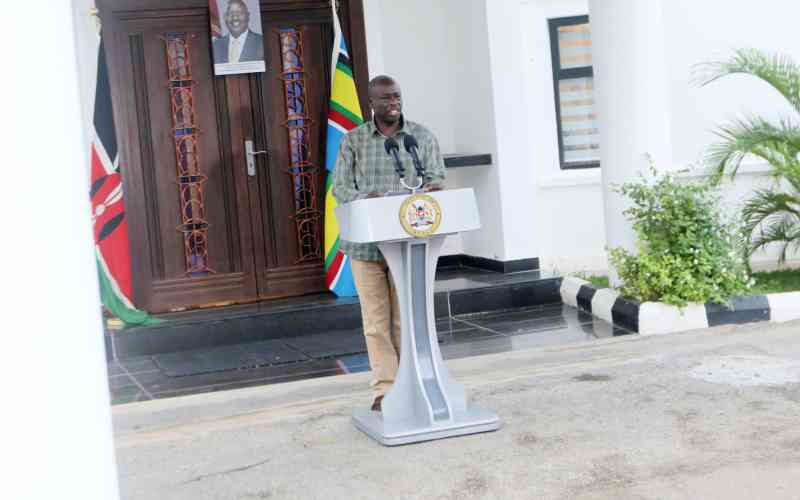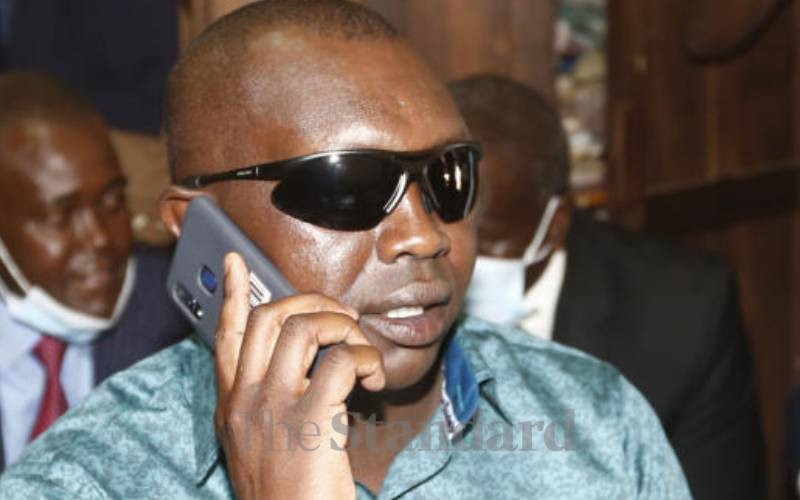 |
|
Low-income earners can now flash a smart card when seeking treatment. (Photo: Courtesy) |
By Jackson Okoth
It is now possible for low-income earners to flash a smart card when seeking treatment from selected Government hospitals, faith-based health facilities or public health centres. This follows the entry of several underwriters into the low-income medical insurance business.
But while the market has several products for the low-income brackets, there is little knowledge among this class of consumers on what to look for when shopping for medical insurance cover.
Notable underwriters playing the low-end medical insurance market include CIC Insurance, with Afya Bora and Britam’s Linda Jamii product.
In a bid to reach those at the bottom of the pyramid, one underwriter is riding on the mobile technology platform to cut on costs and provide a low-cost cover, priced at Sh1,000 per month or Sh12,000 per year.
Analysts describe Linda Jamii as a game changer that will transform the micro-insurance landscape if its uptake is successful.
This product is offered by Safaricom, Britam and Changamka Health — a micro-insurance firm offers the facility that would enables low-income earners to make contributions via M-Pesa. Linda Jamii has a target of reaching over 35 million low-income Kenyans who have no medical insurance. The product provides in and out patient, maternity and income insurance during hospitalisation of about Sh500 per day.
According to the plan, once one accumulates Sh6,000, they will be eligible to receive medical assistance when required. The greatest benefit for this product is to families, as it will see an in-patient and outpatient cover for two parents and an unlimited number of children.
Terms of facility
According to Britam, the medical cover will undertake insurance against pre-existing conditions including HIV.
“Linda Jamii is able to reach low income individuals because of the large database of M-Pesa subscribers and 80,000 mobile cash agents. The technology used allows for a paperless process, which minimises distribution costs and leverages on trusted brand names,” said Charles Muyodi, General Manager, Bancassurance & Micro-insurance-Britam.
Linda Jamii has a cutting edge that sets it apart from other competitors, including the use of the M-Pesa platform to accumulate savings. This innovative approach reduces traditional entry barriers.
“The mobile platform is also used to pay benefits, while electronic claims are submitted by hospitals reducing delays and eliminating the need for lengthy reconciliations,” said Muyodi.
“From a layman’s perspective, there appears to be very little difference in the product offerings. This creates a tendency to go for the cheapest. But for one to go for the facility, it’s advisable to look at the benefits, size of family covered and exclusions in order to make an informed decision,” explained Eve Thiong’o, Business Development Manager, CIC Insurance Group.
But even as Linda Jamii reaches out to the low-income segments, using sophisticated IT platforms, concerns remains on quality of health care offered by the scheme.
Stay informed. Subscribe to our newsletter
For instance, experts point out that the challenge of dealing with Government hospitals is that they are not equipped with facilities to provide services on credit.
In most Government health facilities, there are usually long queues of patients waiting to be treated. In some cases, Government hospitals have inadequate drugs or shortage of doctors, a space that is filled by clinical officers.
The other risk of dealing with low-income segment in medical insurance is that low-income earners have a low level of appreciation.
“There is a negative perception and a lot of mistrust, especially after collapse of several insurance companies. A player going into micro medical insurance must therefore invest a lot in awareness campaigns and training,” said Thiong’o.
Insurance products are technical and what is required is to break down the literature and policy documents in a language that is simple and easy to understand.
Available figures indicate that worldwide, it takes at least eight years for a micro-insurance scheme to break even. In Kenya, those playing in this league have had to dig into their margins, including supporting the business with other classes.
“When shopping around for an individual medical cover, cost is the first consideration. One should also look at the medical service provider network, which includes hospitals, chemists and laboratories,” said Anna Manyara, Business Development Manager at Alexander Forbes Risk&Insurance Brokers.
While Linda Jamii has a medical services provider network that includes mission hospitals or government district hospitals, in most cases-these outlets do not have original or branded medicine and instead stock a lot of generics.
With low premiums, an underwriter of this size has to seek services of low-cost providers to squeeze a profit margin.
An individual shopping for a medical cover must also ensure that medical service providers listed on the product are easily accessible and within reach.
Linda Jamii is considered a game changer in that it has reached out to the low-income population in the rural areas whose only access to medical services is a Government hospital of health centre.
“If one happens to be critically ill, requiring specialised treatment, this patient can still be transferred to a better facility with the network-located mostly in Nairobi. However, benefits provided under Linda Jamii is still too low and might not be able to deal with critical illnesses that required specialised medical attention,” said Manyara.
 The Standard Group Plc is a
multi-media organization with investments in media platforms spanning newspaper
print operations, television, radio broadcasting, digital and online services. The
Standard Group is recognized as a leading multi-media house in Kenya with a key
influence in matters of national and international interest.
The Standard Group Plc is a
multi-media organization with investments in media platforms spanning newspaper
print operations, television, radio broadcasting, digital and online services. The
Standard Group is recognized as a leading multi-media house in Kenya with a key
influence in matters of national and international interest.
 The Standard Group Plc is a
multi-media organization with investments in media platforms spanning newspaper
print operations, television, radio broadcasting, digital and online services. The
Standard Group is recognized as a leading multi-media house in Kenya with a key
influence in matters of national and international interest.
The Standard Group Plc is a
multi-media organization with investments in media platforms spanning newspaper
print operations, television, radio broadcasting, digital and online services. The
Standard Group is recognized as a leading multi-media house in Kenya with a key
influence in matters of national and international interest.






